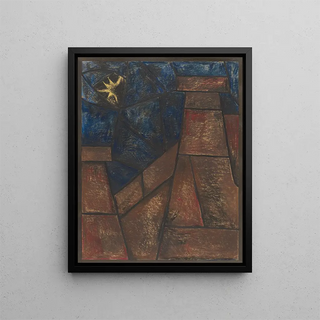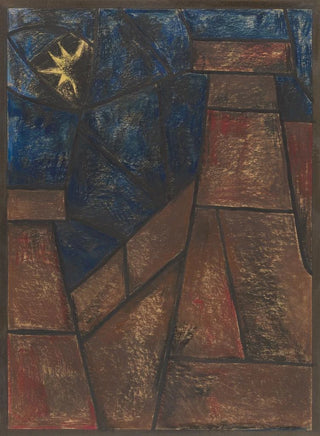Art print | Window project in the north transept of Utrecht Cathedral 54 - Richard Nicolas Roland Holst


View from behind

Frame (optional)
In the rich and complex landscape of Dutch art, the work of Richard Nicolas Roland Holst stands out for its ability to blend tradition and modernity. The art print of his window project in the north transept of the Dom in Utrecht 54 invites deep reflection on the interaction between sacred architecture and stained glass art. This piece, although designed for a specific space, transcends its context to touch on the universal. It embodies a dialogue between light and color, a subtle play that evokes spirituality and contemplation, characteristic of great stained glass works.
Style and uniqueness of the work
Holst's style is characterized by a delicate and poetic approach, where each element is carefully thought out to serve a visual narrative. In this work, stylized forms and floral motifs blend harmoniously, creating an atmosphere that is both soothing and inspiring. The color palette chosen by the artist evokes a gentle luminosity, allowing light to filter through the glass in a way that transforms the surrounding space. Fluid lines and meticulous details testify to exceptional craftsmanship, while the overall harmony of the composition invites the viewer to a contemplative experience. Holst thus manages to capture the very essence of Gothic architecture while infusing it with a touch of modernity, making his work timeless.
The artist and his influence
Richard Nicolas Roland Holst, an emblematic figure of Dutch art in the early 20th century, established himself through his innovative approach and commitment to beauty. Influenced by the artistic movements of his time, notably symbolism and Art Nouveau, Holst developed a personal style that combines tradition and innovation. His work on stained glass is particularly remarkable, as it demonstrates a deep understanding of materials and their interaction with light. As an artist, he not only contributed to the beautification of religious buildings but also paved the way for a new appreciation of decorative art in architecture. His influence endures, inspiring many contemporary artists to explore the possibilities offered by stained glass and to redefine its role.

Matte finish

View from behind

Frame (optional)
In the rich and complex landscape of Dutch art, the work of Richard Nicolas Roland Holst stands out for its ability to blend tradition and modernity. The art print of his window project in the north transept of the Dom in Utrecht 54 invites deep reflection on the interaction between sacred architecture and stained glass art. This piece, although designed for a specific space, transcends its context to touch on the universal. It embodies a dialogue between light and color, a subtle play that evokes spirituality and contemplation, characteristic of great stained glass works.
Style and uniqueness of the work
Holst's style is characterized by a delicate and poetic approach, where each element is carefully thought out to serve a visual narrative. In this work, stylized forms and floral motifs blend harmoniously, creating an atmosphere that is both soothing and inspiring. The color palette chosen by the artist evokes a gentle luminosity, allowing light to filter through the glass in a way that transforms the surrounding space. Fluid lines and meticulous details testify to exceptional craftsmanship, while the overall harmony of the composition invites the viewer to a contemplative experience. Holst thus manages to capture the very essence of Gothic architecture while infusing it with a touch of modernity, making his work timeless.
The artist and his influence
Richard Nicolas Roland Holst, an emblematic figure of Dutch art in the early 20th century, established himself through his innovative approach and commitment to beauty. Influenced by the artistic movements of his time, notably symbolism and Art Nouveau, Holst developed a personal style that combines tradition and innovation. His work on stained glass is particularly remarkable, as it demonstrates a deep understanding of materials and their interaction with light. As an artist, he not only contributed to the beautification of religious buildings but also paved the way for a new appreciation of decorative art in architecture. His influence endures, inspiring many contemporary artists to explore the possibilities offered by stained glass and to redefine its role.






